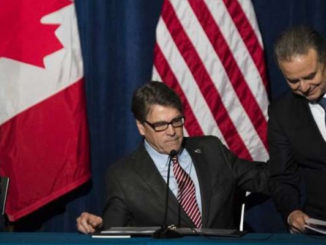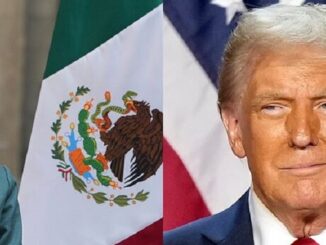
By Thomas F. Mack McLarty
Twenty years ago this month President Bill Clinton signed the North American Free Trade Agreement into law. If there is one thing supporters and critics of this pact have always agreed on, it is the size of the stakes. In November 1993, Mr. Clinton, facing fierce opposition within his party, implored Congress to pass Nafta as a vote for the country’s future, a sign that “we still have confidence in ourselves and our potential.”
The agreement to eliminate tariffs and other trade barriers among the United States, Canada and Mexico has delivered undeniable benefits. U.S. trade with Mexico and Canada has tripled to more than $1 trillion a year, supporting millions of American jobs. The U.S. exported more last year to Mexico than to Brazil, Russia, India and China combined; and more to Canada, with 35 million people, than to the European Union, with 500 million.
Two decades ago, North American free trade was an idea ahead of its time. Never before had two developed economies attempted a free-trade pact with a developing country. Signed by President George H.W. Bush, Mexican President Carlos Salinas, and Canadian Prime Minister Brian Mulroney on Dec. 17, 1992, the agreement survived because of an extraordinary act of bipartisanship in Washington. After taking office in January 1993, Mr. Clinton, in a signature moment of his presidency, defied parts of his political base who claimed the treaty would destroy U.S. jobs and won approval by Congress with more Republican than Democratic votes.
Nafta also opened the door for free trade agreements across Latin America, a catalyst for economic and political reforms. Mexico was transformed from one of the most closed economies in the world to one of the most open, and it subsequently threw off decades of one-party rule. Today, U.S. products make up 40% of the contents of goods imported here from Mexico (compared with 4% in goods imported from China). An integrated market boosts exports and imports, and helps keep good jobs at home.
But there have been unexpected roadblocks. The 9/11 attacks shifted the priority at U.S. borders to security, and away from trade. It hasn’t shifted back. Concern about illegal immigration and the explosion of drug-related violence in Mexico has meant that billions of dollars have been spent on our borders not to facilitate the movement of goods but to prevent the movement of people. Many Americans support those measures, while many Mexicans oppose them, reflecting persistent distrust between our populations.
Nafta’s unfinished business is also visible in antiquated infrastructure and regulation. For almost a decade leaders of the three countries have endorsed greater regulatory cooperation, with little to show for the efforts. Although $1 billion in goods crosses the U.S.-Mexico border every day, bottlenecks cost millions. All this contributes to less trade. North America’s share of the world’s product, which rose sharply during the first years of Nafta, has been in steady decline and is now roughly 25%. We are not as competitive as we need to be.
There are several reasons now is the right time for new thinking. The border is largely secure and net migration from Mexico has fallen to zero. Immigration reform is back on the U.S. agenda, if tenuously. The Senate’s immigration bill includes $6.5 billion for border security. How much should we invest in cross-border trade?
A new era of energy innovation is also rapidly spreading across North America. The U.S. is forecast to pass Saudi Arabia as the world’s top oil producer in 2015. Under President Enrique Peña Nieto, Mexico is implementing reforms that will allow private capital and competition into the state-owned oil industry. Meanwhile, President Obama has set the goal of doubling U.S. exports between 2010 and 2015. On Nov. 8, the president called for billions of infrastructure investment to increase exports.
The U.S. is in negotiations over two major trade initiatives, the Trans-Pacific Partnership, involving 11 countries that include Japan (but not China) and a trans-Atlantic trade pact with Europe. These negotiations are a chance to improve regional competitiveness through convergence of North American regulations, bringing Nafta in line with these new trade initiatives.
Demographic shifts and cultural understanding are making North America more interconnected. The number of Hispanics living in the U.S. has doubled since 1990 to more than 50 million, two-thirds of whom have Mexican heritage. A recent American University poll released in October showed that there remains widespread support among Canadians (80%), Mexicans (74%) and Americans (65%) for regional free trade.
Nafta is still a work in progress. But as we search for ways to reinvigorate the U.S. economy, freer trade and greater cooperation with our North American neighbors is a clear winner, and perhaps an opportunity for another bipartisan moment in Washington.
Mr. McLarty served as President Bill Clinton’s chief of staff, counselor, and special envoy for the Americas. He is chairman of McLarty Associates and McLarty Companies.



